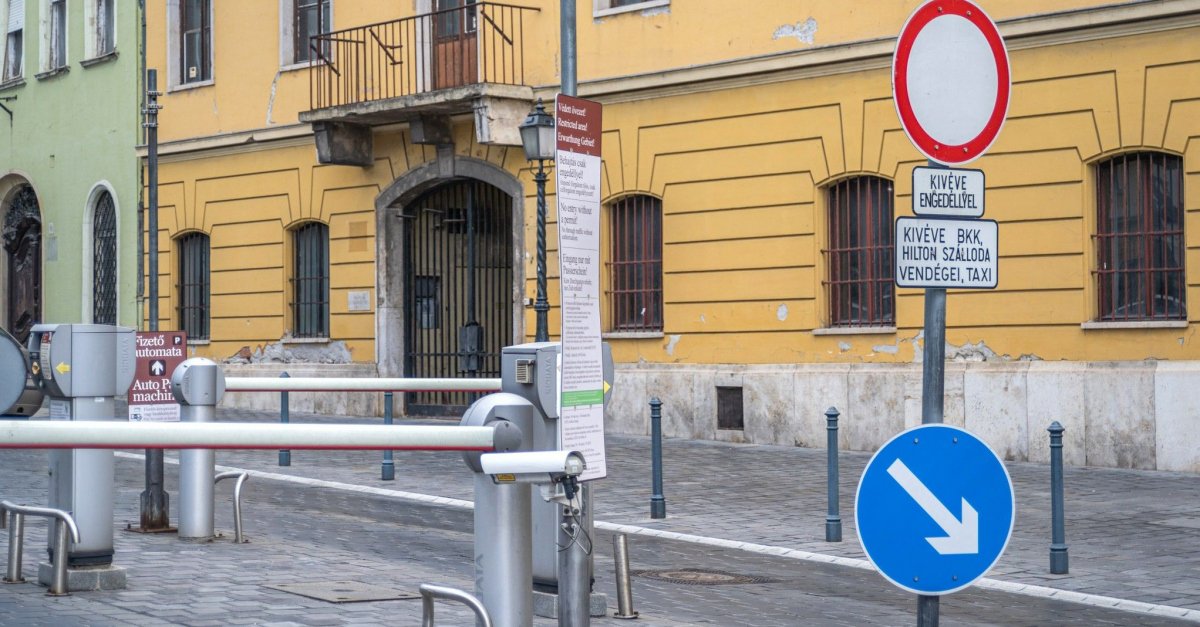Traffic in the Buda Castle has always been significant. It is no coincidence that the city's first steam-powered public transport, the Sikló (Funicular), was built here in 1870. During World War II, the Funicular was destroyed and was not restored after the war. It was thought to be easier to replace with buses.
And the growing traffic could get to the Castle without hindrance. Not only cars and city buses, but also vehicles carrying tourists travelled on the narrow castle roads. And this put a huge strain on the caves and underground passages in the depths of Castle Hill, some of which were built cellars but most natural formations.
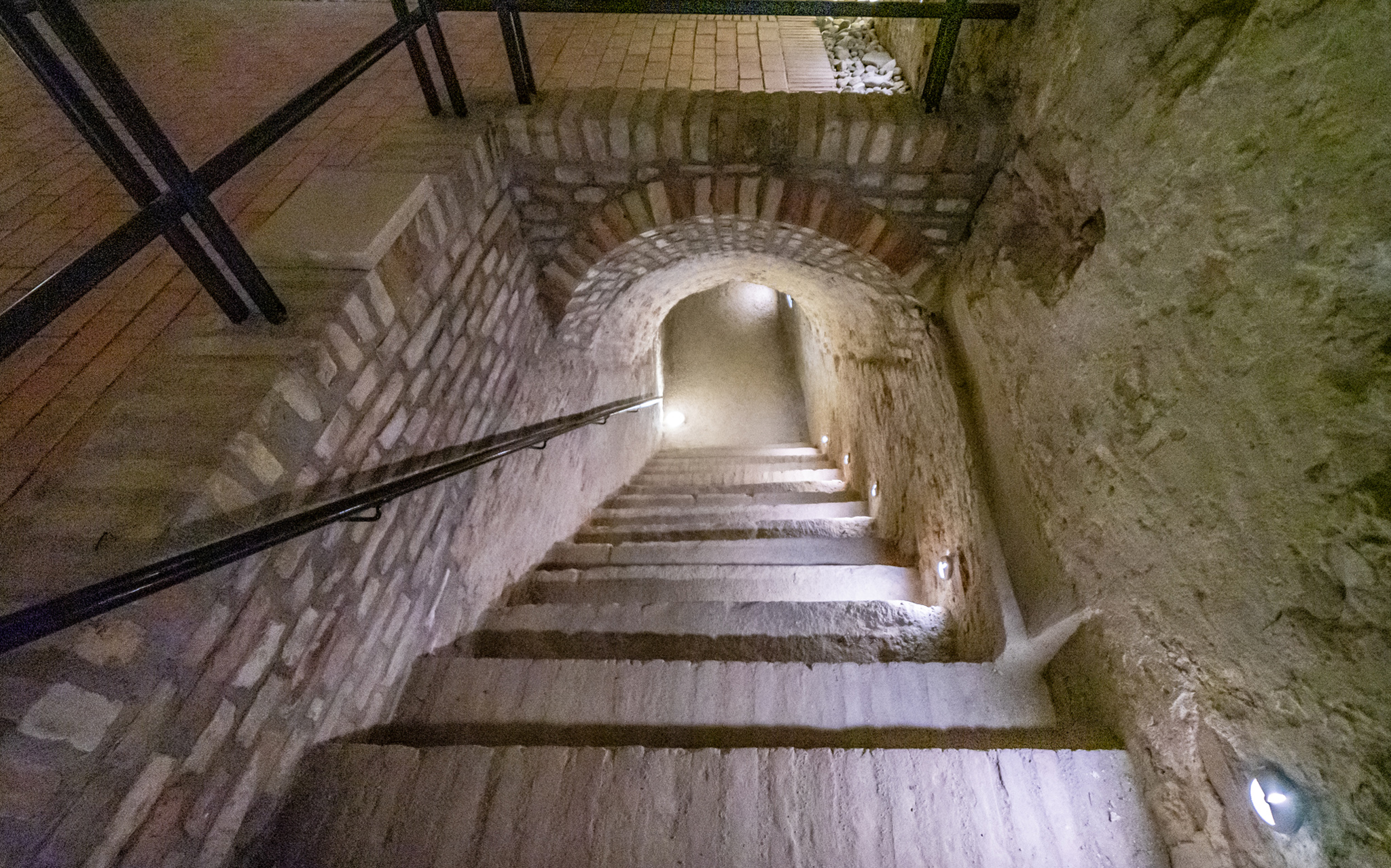
Castle Hill is like porous cheese, full of passages, cellars, cavities (Photo: Balázs Both/pestbuda.hu)
Some of the cavities under the houses and streets, the smaller and larger passages, were previously filled with debris, and due to the constant vibration caused by the traffic, it was feared that the roadway might even collapse under a heavier vehicle. Therefore, in May 1986, traffic was restricted, and vehicles were only allowed to enter the Castle with permission. On 1 June 1986, the newspaper Autó-Motor justified the change as follows:
“The enormous traffic congestion and the associated detrimental effects threatened the rapid environmental deterioration of the Castle by the early 1980s. Radical restrictions on traffic have become urgent. In parallel with the preparation of the traffic restriction, the residential area of the castle was renovated. In the autumn of 1985, it became clear that there were several deep cellars and caves in the cellar system below the residential area of the castle, which, due to their condition, could create a dangerous situation if traffic, especially of vehicles causing large shocks, did not decrease. ”
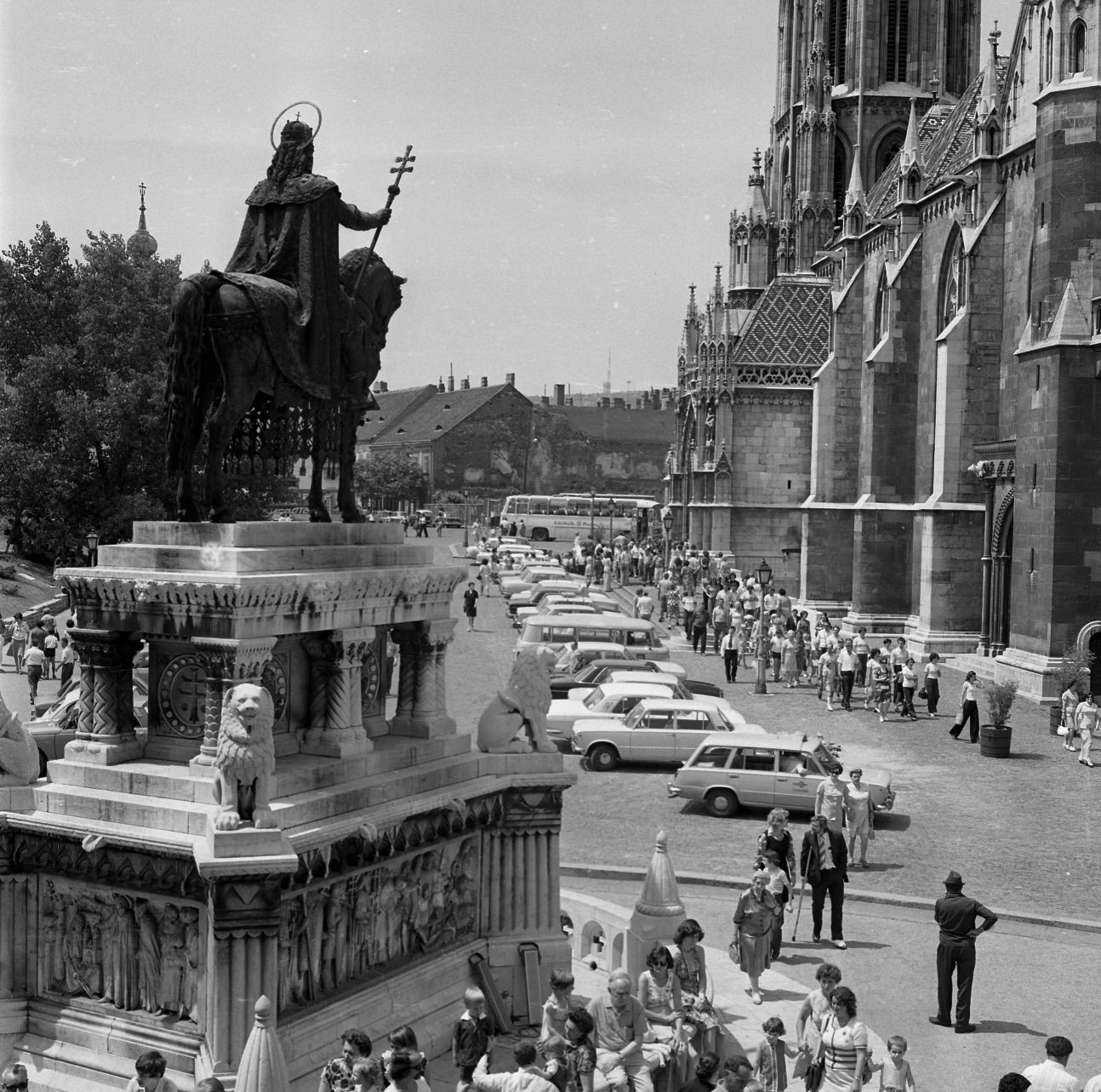
Parking cars on Szentháromság Square in 1975 (Source: Fortepan / No.: 66083)
The paper also mentioned that at that time, there was simply not enough parking spaces in the Castle. The parking space capacity was 500 places/hour less than needed. There were a total of 900 parking spaces in the Castle, occupied by local residents and employees of local institutions, so tourists and occasional visitors stopped where they could: on the pavement, in front of gates, obstructing pedestrians and other cars as well.
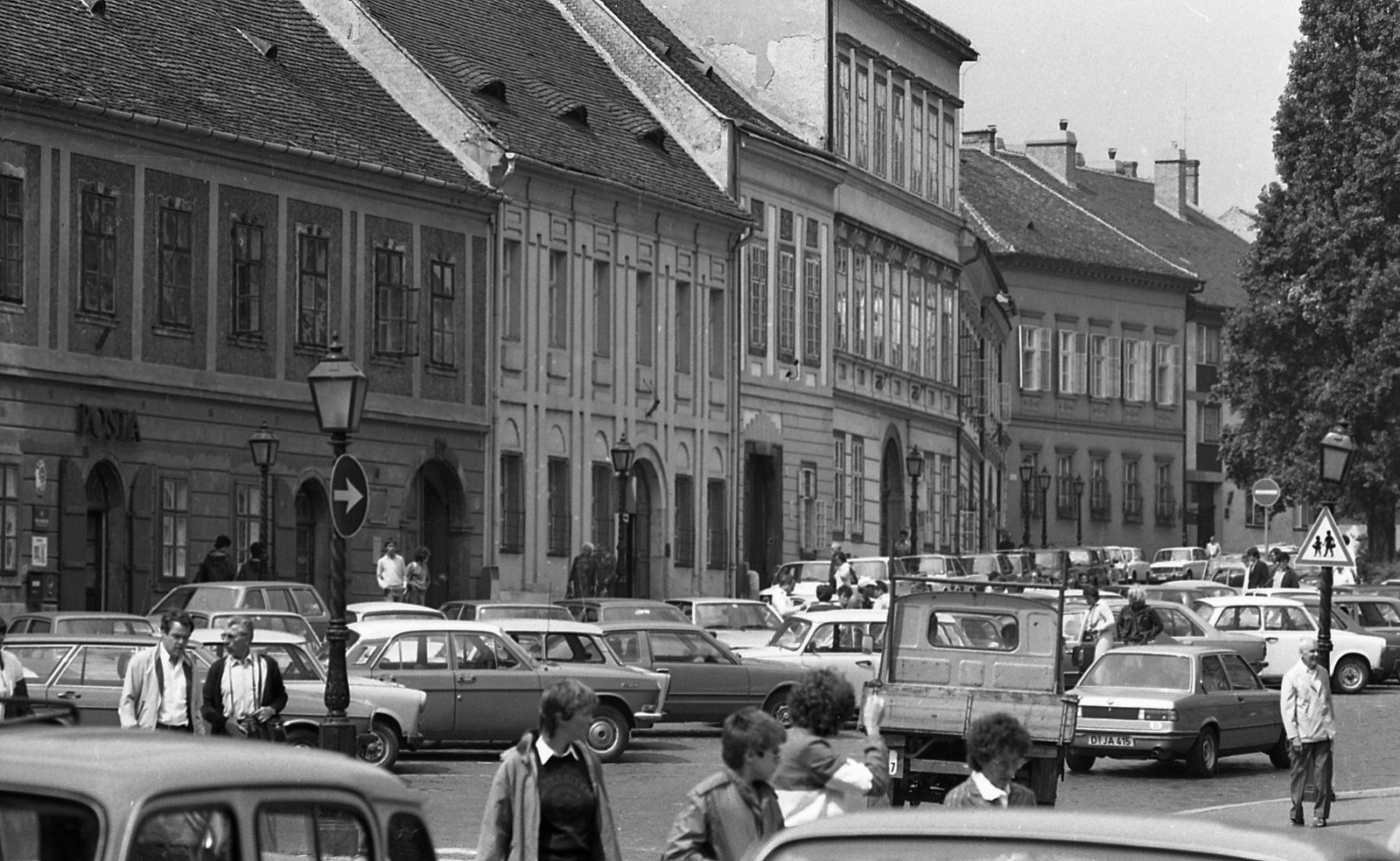
Dísz Square with parked cars in 1983 (Source: Fortepan / No.: 67027)
There were some restrictions in the Castle before that. It was only possible to drive at speeds of 40 kilometres per hour, and only vehicles lighter than 3.5 tonnes could enter. But from May 1986, more radical steps came.
Entrance to the area between the Bécsi Gate and Dísz Square was restricted, and the area south of Dísz Square closed: cars could only enter with special permits and busses were barred. Of course, the restriction did not apply to taxis, ambulances (and fire trucks) and garbage trucks. Several parking lots were created around the Castle, where 500 cars and 50 tourist buses could park at the same time.
It was also planned that BKV would bring special smaller buses to the area. But at the time, the transport company did not have such buses, so buses 16 and 16/A continued to run in traditional large vehicles, but at a reduced speed of 20 kilometres per hour. The lift to the Castle from Dózsa György Square and the restored Funicular from Clark Ádám Square (which was planned to be opened at the time) also helped to access the Castle.
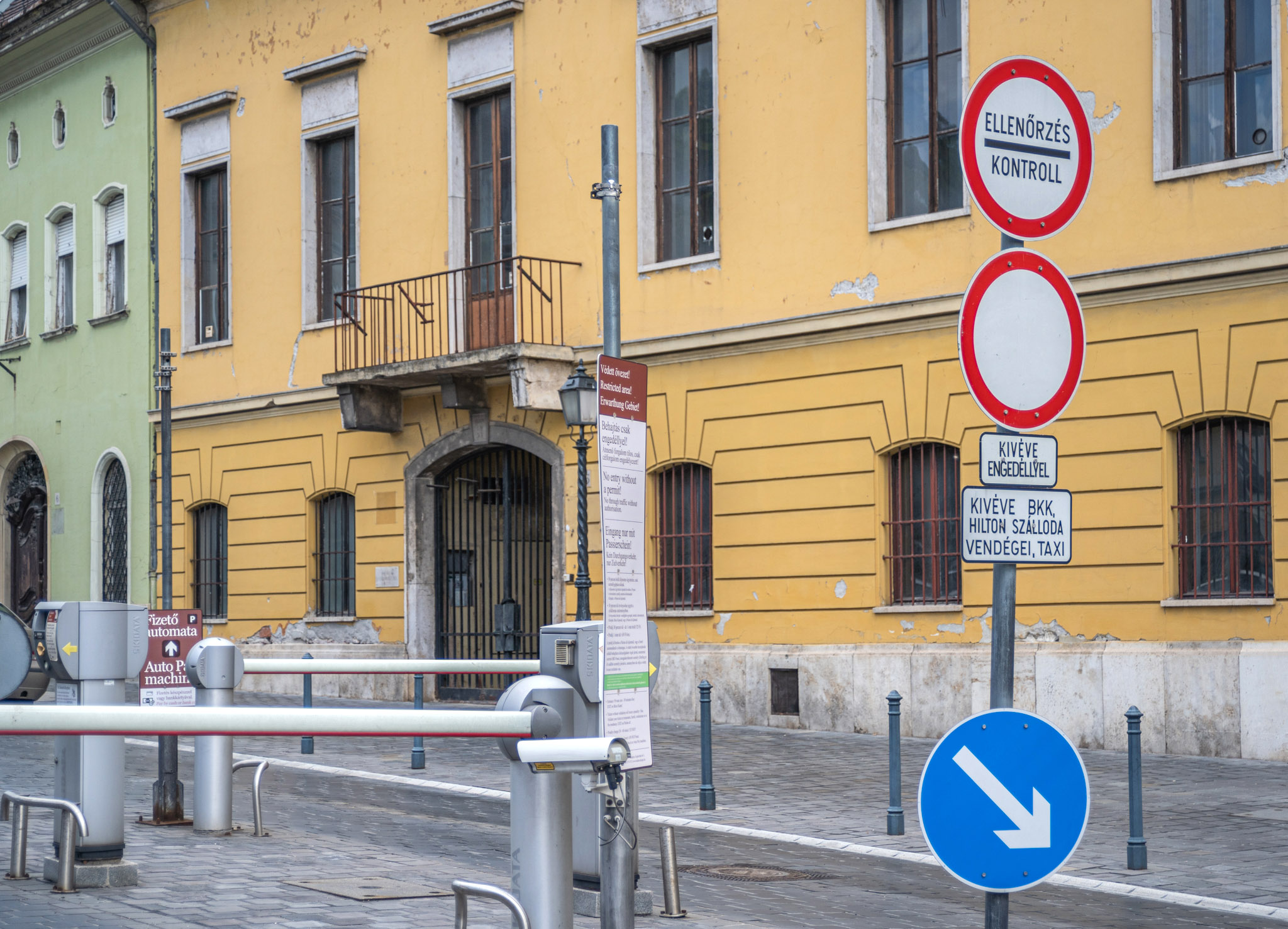
The Buda Castle is a protected area, and by restricting traffic, the ancient monument buildings and the cave system under the Castle were protected (Photo: Balázs Both / pestbuda.hu)
Who could drive a car in the Castle? Residents (in possession of the annual license for 50 forints), the suppliers of the shops and services operating here, who could only transport between 6 pm and 10 am, and the service vehicles of the public institutions here. There were, of course, unique, special cases, which the article already quoted described as follows:
“- there are some well-known, special institutions in the Castle (Hilton Hotel, Matthias Church, marriage hall, etc.). Their traffic is partly known, but partly unpredictable, but it is organically related to their core business (eg. events, conferences, press receptions, wedding parties, etc.). Reasonable, permanent needs can be met and individual permits for that day will be issued to participants of specific events."
In addition to protecting the buildings and roads here, the aim was to provide better conditions for pedestrian traffic in the Castle.
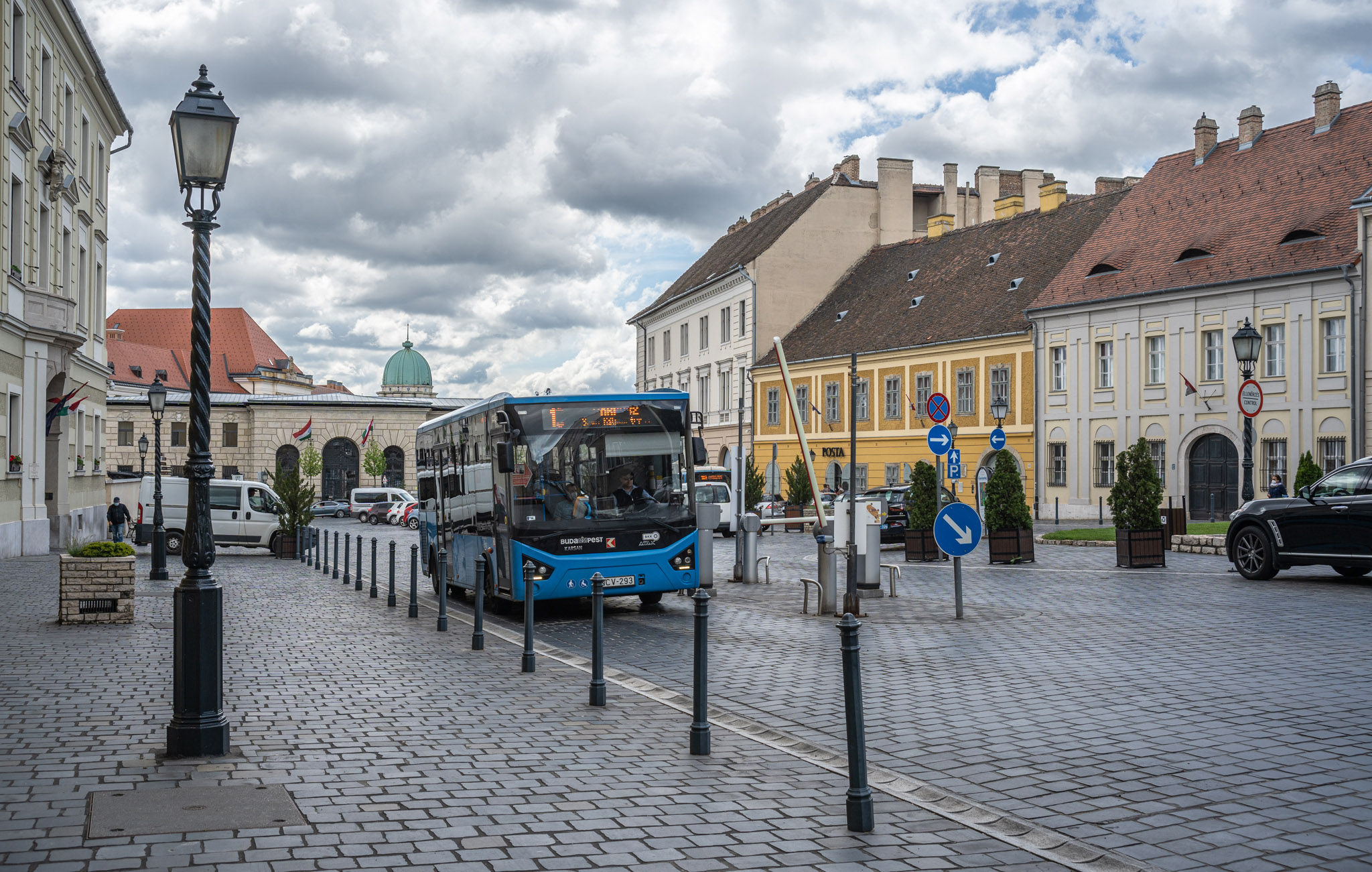
Midibus passes through the barrier gate of the Castle in May 2021 (Photo: Balázs Both / pestbuda.hu)
BKV planned to solve the problem of public transport with smaller buses. The company only got a somewhat suitable bus for this in 1988, the Ikarus 521, which was able to meet the targeted aims to a rather limited extent. Therefore, in 1994, they were replaced by special, small, city buses, the Ikarus 405s, which, however, were not the most successful series from the company. Today, BKV uses more modern but also small vehicles here.
Although according to the traffic signs at the Bécsi kapu Square and Dísz Square barrier gates, one can only enter with a permit even today, on the website of the parking company, it can be read that anyone can drive into the protected area without a permit and can stay there for a limited time if their destination is within the protected area of the Buda Castle. The operator of a vehicle that exceeds the time limit must pay a waiting fee.
Cover photo: Barrier gate in the Buda Castle, on Dísz Square (Photo: Balázs Both / pestbuda.hu)

